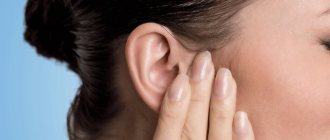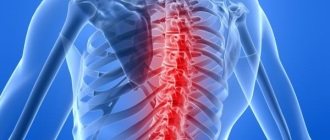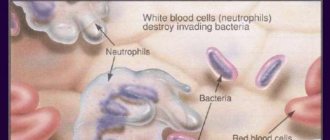Some people experience ear pain when the plane lands. Pain can occur as soon as the plane descends and becomes very intense at the moment of landing. As a rule, the discomfort goes away soon after landing. Such problems are sometimes called aerootitis or “airplane ear.” Together with GMS Clinic otolaryngologist, Shmeleva Lyubov Petrovna, we will try to figure out why this occurs, whether it can be avoided and what to do if the problem does arise. What causes stuffy ears?
The pain is caused by the pressure difference between the air in the middle ear and the outside air. The small space in the middle ear behind the eardrum (tympanic cavity) is normally filled with air. This air space is connected to the back of the nose (nasopharynx) by a narrow channel called the Eustachian tube.
The air pressure on both sides of the eardrum should be the same. Atmospheric pressure increases the closer to the earth's surface. During landing, the plane descends and the air pressure rises accordingly. The air begins to press on the eardrum, which leads to its retraction inward. Sudden retraction can be quite painful. To counteract this, the pressure inside the middle ear must also increase. To do this, air must travel up the eustachian tube into the middle ear. The Eustachian tube is usually closed, but opens from time to time - when a person swallows, yawns or chews. In most people, normal swallowing and chewing movements quickly open the Eustachian tube, allowing air to flow into the tympanic cavity to equalize pressure. In some people, the Eustachian tube does not open as easily and therefore the pressure cannot be equalized as quickly. In addition, the Eustachian tube may be narrower than usual. A common cause of a blocked eustachian tube is inflammation due to a cold, runny nose, sore throat or allergies.
Why can the ear become clogged?
The most common reason for blocked ears is water getting into the ear canal while swimming and pressure changes on airplanes or when climbing mountains. However, these situations cannot be attributed to pathology, and they quickly pass on their own. Causes of blocked ears:
- Against the background of ARVI, colds, flu. Swelling of the mucous membrane of the nasal passages and nasopharynx leads to blocking of the opening of the Eustachian tube. This causes a violation of pressure regulation in the tympanic cavity and is perceived as ear congestion on one or both sides;
- Increased blood pressure. May be subjectively perceived as ear congestion, sometimes along with dizziness or headaches;
- The formation of cerumen plug or the presence of foreign bodies that completely or partially block the opening of the ear canal;
- Various otitises that interfere with sound conduction;
- Injuries to the head area;
- Neoplasms of the brain.
Congestion can be on one or both sides. There are several degrees of hearing impairment:
- Easy. Whispered speech is poorly perceived, especially against the background of extraneous noise;
- Moderate. Conversational speech is poorly perceived against the background of extraneous noise;
- Significant. Conversational speech is poorly understood even in a quiet environment;
- Heavy. Loud speech and shouting are difficult to perceive.
Blocked ears: disease or just a plug
Periodically, the ears become clogged due to the formation of wax plugs, as well as against the background of colds and other acute respiratory viral infections, accompanied by inflammatory processes. As a rule, congestion itself is not a disease and does not pose a health risk. But in some cases it is necessary to consult a doctor and undergo an examination:
- the cold goes away, but congestion does not;
- congestion has persisted for several days and is accompanied by pain;
- hearing acuity decreases;
- discharge appears from the ear with or without pus;
- Along with congestion, dizziness appeared.
If at least one of the described symptoms appears, you should not self-medicate. This can lead to further development of the disease, which will complicate the recovery process.
Diagnostics
To identify the root cause of ear congestion, a variety of diagnostic tests may be needed. It all starts with a consultation and examination with an ENT specialist,
available in our clinic. If visible pathology is detected (foreign bodies, infectious and inflammatory processes, plugs, etc.), then further examination will no longer be necessary.
MRI may be necessary if neoplasms or traumatic brain injuries are suspected. Any other studies, such as general and biochemical blood tests, will not have such a high diagnostic value and can help in clarifying the diagnosis and determining the direction of the search for pathology.
What to do if your ear is blocked
If a wax plug appears, very often there is a desire to carry out independent cleaning using cotton swabs. It won't actually get rid of the pollution. Moreover, the plug will thicken and pass even further along the ear canal. As a result, hearing will decrease to a minimum or temporarily disappear.
Therefore, it is necessary to use other methods:
- Suck on a lozenge, drink water, or chew gum. This technique works well if the congestion is not very severe.
- Take a deep breath, cover your nose and mouth with your hand, and exhale slowly.
- Head tilt - tilt your head strongly to the side, while keeping your shoulders straight. Slowly pull the affected ear upward and simultaneously perform any of the techniques described below.
- The Valsalva maneuver is to take a maximum breath, close your nostrils with your fingers and forcefully try to exhale through your nose. At the same time, you need to try not to swell your cheeks - the air should only flow through the nostrils.
- The Frenzel maneuver is to swallow and close the vocal cords, pinching the nostrils and attempting to make an “uh” (guttural) or “k” sound.
- The Toynbee maneuver is to close your nostrils and swallow.
- The Edmond technique is a combined version. The Frenzel or Valsava maneuver is used as a basis, but the pressure on the vocal cords should not be very strong. The head must be jerked to the side.
- Lauri's technique is to close the nostrils, create pressure and swallow at the same time.
- Twitching - pinch the nostrils, create moderate pressure in the larynx and gradually pump it up using the Frenzel or Valsava technique. Then jerk your head sharply to the right or left.
Methods for treating and preventing ear congestion
It won’t be difficult to relieve ear congestion due to wax plugs or foreign bodies in the ear canal. There will be enough washing and toileting here. If the feeling of stuffiness is associated with colds, anti-inflammatory therapy and the use of vasoconstrictor drops in the nose are carried out - all this will restore the patency of the Eustachian tube and improve the condition.
If the ear is blocked due to external or otitis media, treatment will also include antibacterial therapy. All these procedures are provided by our clinic.
Neoplasms and consequences of previous injuries will require surgical treatment. It is not always possible to completely restore hearing in such situations.
Blocked ears in one or both ears is a symptom of a number of diseases. Sometimes they are identified after a simple examination by an otolaryngologist, in other cases they require an extensive diagnostic search. Treatment tactics directly depend on the cause of the symptom.
Dear patients! Remember that only a qualified doctor can make an accurate diagnosis, determine the causes and nature of the disease, and prescribe effective treatment. You can make an appointment with our specialists or call a doctor at home by calling 8-(4822)-33-00-33
Be healthy and happy!
Diagnosis and treatment of congestion
Since the cause of its occurrence may be any of the factors listed above, treatment in each specific case will require a special approach, procedures, techniques and drugs. It is impossible to make a diagnosis on your own, without a thorough examination in a medical clinic and consultation with a doctor, and without knowing the diagnosis, treatment is simply dangerous. Do not forget that regular ear congestion, especially in combination with pain, is a reason to immediately seek medical help, and not experiment with “proven remedies.”
Depending on the results of the medical history and initial examination of the patient, he may be offered tests and prescribed various research methods to clarify the diagnosis, including MRI and computed tomography. Only after the cause of ear congestion is known, the doctor will be able to develop the right strategy to combat this condition and prescribe the necessary procedures and medications.
The reception is conducted by specialists
Kirillov Evgeniy Sergeevich
Audiologist
Cost of services
Initial consultation with an audiologist
1200₽
Repeated consultation with an audiologist
1000₽
Neurological diseases
This group of syndromes is a common cause of decreased visual acuity. Therefore, if your ears are blocked, you should pay attention to the state of the nervous system. Thus, the main diseases that can cause disruption of the functioning of the hearing aid are vegetative-vascular dystonia and osteochondrosis of the cervical spine. It is worth saying that the clinical picture of these syndromes is often accompanied by headaches and darkening of the eyes.
The mechanism of ear congestion in neurological diseases has not been sufficiently studied. However, it is assumed that the main reason for the development of this and many other symptoms is a violation of the blood supply to the nerves innervating the components of the auditory analyzer. Congestion in this situation can be eliminated only by getting rid of the primary disease.
Folk remedies
Elimination of ear canal congestion is possible only after getting rid of the problem that led to the development of this unpleasant symptom. However, you can speed up the process using folk remedies. Remember that the use of any recommendations from healers should be discussed with your doctor first. Otherwise, you risk, in addition to the main disease, getting many other problems. Among the huge number of folk remedies for getting rid of ear congestion, the following can be particularly highlighted:
- Warming compresses. Any such procedures should be carried out only if you are completely sure that there are no purulent or inflammatory processes in the ear. It is recommended to warm up with camphor alcohol. For this purpose, gauze or a cotton swab is moistened in the specified composition, wrung out a little and applied to the auricle. The duration of one session is about 20 minutes. It is recommended to carry out warming three times a day until the condition improves.
- Inhalation with decoctions of medicinal herbs. 2 tbsp. l. pour dry raw materials with cold water and bring to a boil. Then, covered with a towel, breathe in the steam emanating from the container with the medicinal decoction. Carry out inhalations twice a day for a week until the buzzing (ringing) in your ears stops.
- Washing with saline solution. This popular advice is used if your ears periodically become blocked due to a runny nose. The procedure is carried out by intranasal administration of a hypertonic solution. The latter is prepared at the rate of 2 tsp. salt per glass of water. The procedure for washing the nasal passages is carried out using a pipette several times a day.
Colds
If the upper respiratory tract is affected by the inflammatory process, swelling of the nasal and pharyngeal mucosa occurs. As a result, the entrance to the auditory tube is blocked, which can impair the ventilation of the ear cavities. Symptoms of congestion due to a runny nose or cold appear especially intense in the morning after sleep. In this case, no pathological changes occur in the ear canals, and the decrease in hearing acuity is temporary and, as a rule, resolves after the symptoms of a cold subside.
Deviated nasal septum
This disease can occur at any age and provoke the development of many other unpleasant symptoms. So, in a normal situation, air circulates freely in the maxillary sinuses and other nasal cavities, preventing the proliferation of pathogenic flora. When the nasal septum is deviated, the supply of oxygen is limited, which promotes the proliferation of pathogenic microorganisms in these areas. Over time, the inflammatory process spreads to the nasopharynx, which leads to a decrease in hearing acuity.
Eustachite
In medicine, a broad understanding of this condition is used as inflammation of the middle ear. It must be said that the primary symptoms of the disease arise due to inflammation of the Eustachian tube. The close connection of this canal with the middle ear contributes to the further spread of the pathological process. In addition, during the acute phase of the disease, the mucous membrane of the Eustachian tube swells, resulting in a narrowing of its lumen, against which the internal pressure of the tympanic cavity decreases and a feeling of congestion appears.
Allergic rhinitis
This condition occurs especially often in childhood. The child’s immunity is highly sensitive to various types of allergens: pollen, food products, and medications. In a situation where a foreign protein structure enters the body through the upper respiratory tract, it settles on the mucous membrane of the nasopharynx, causing inflammation and swelling of the surrounding tissues.
These pathological changes lead to the development of allergic rhinitis with copious mucus discharge from the nose (severe runny nose), lacrimation, severe difficulty breathing and other unpleasant symptoms. In addition, against the background of swelling of the nasopharynx, the appearance of symptoms of ear congestion is noted due to the blocking of the entrance of the auditory tubes by hyperplastic tissues.
Causes of headaches and ear congestion
Constant pain in the head, which causes blocking of the ears, is an alarming symptom for which you should seek medical help. It may indicate physiological changes that do not require therapy, including water entering the ear canals or fatigue. However, in some cases, this sign will help identify dangerous diseases in the early stages and begin treatment on time.
High blood pressure
Chronic hypertension is a disorder in which the pressure in the arteries exceeds normal levels. In a healthy person at rest it is 120/80 mmHg, but it is important to take into account individual characteristics. Blood pressure is considered high if it is 140/90 mmHg. and more. The condition can be caused either by an increase in circulating blood volume or by vascular spasms.
Blood pressure is easy to measure yourself using a tonometer. If the readings are too high, you should seek medical help. Without timely treatment, hypertension poses a danger to the patient and can cause the following complications:
- angina pectoris - acute pain in the chest;
- myocardial infarction - a sharp disruption in the supply of oxygen to the heart muscle;
- chronic heart failure – deterioration of the heart valve apparatus caused by increased load on it;
- arrhythmia is a disturbance in the heart rhythm that can cause a heart attack.
When blood pressure rises, the patient has a headache and pressure on the ears. Symptoms such as dizziness, nausea, hearing loss and poor coordination of movements also occur. With a sudden attack, fainting is possible. Hypertension can be triggered by an increase in atmospheric pressure, physical activity, stress, disruption of the daily routine and other factors. For chronic hypertension, it is necessary to take medications in a course, including to remove excess fluid.
Inflammation of the paranasal sinuses
Sinusitis is an inflammation of the mucous membrane of the paranasal sinuses. With this disease, the nose and ears are blocked, the head hurts, and the overall body temperature rises. The process can be caused by a viral or bacterial infection, and cold weather is often the trigger. Sinusitis occurs in acute or chronic forms and may recur after some time. In addition, the disease can manifest itself as a complication of seasonal colds.
The paranasal sinuses are cavities formed by the bones of the skull. In a healthy person, they are not filled with anything, and their walls are lined with mucous membrane. During the inflammatory process, pathological contents appear in them, which causes headaches. Sinusitis can be serous (with clear liquid contents), catarrhal (cavities filled with mucus), purulent and mixed. Depending on the location of the process, there are several types of this disease:
- sinusitis - inflammation of the maxillary sinus, often occurs as a complication of a cold;
- frontal sinusitis - the process affects the frontal paranasal sinus;
- ethmoiditis - inflammation of the mucous membrane located in the ethmoid labyrinth;
- sphenoiditis - damage to the mucous membrane of the sphenoid sinus.
At home, you can conduct an initial diagnosis of sinusitis. If you sharply tilt your head forward and down, a sharp pain occurs in the forehead. This indicates fluid accumulation in the sinuses. Also, with inflammation of the maxillary sinuses, headaches intensify at low temperatures and decrease in a warm room.
Diseases of the hearing organ
If your ears are blocked due to pain in your head, you should undergo an examination by an otolaryngologist. Chronic diseases of the organ of hearing cause a sharp deterioration in health, increased body temperature, impaired balance and coordination of movements, as well as other symptoms and complications.
- Otitis is an inflammation of the ear in any of its parts. Depending on the location, they distinguish between external, middle and internal, and according to the nature of the course - acute and chronic otitis. The process can be caused by hypothermia or herbs, as well as viral and bacterial infections. Internal purulent otitis is the most dangerous because it can spread to the membranes of the brain and cause meningitis.
- Acoustic neuroma is a benign neoplasm. Its first symptoms include constant headaches and dizziness, as well as hearing loss. Over time, nausea, loss of coordination of movements, and atrophy of the masticatory muscles appear. Neuroma does not disappear on its own and may increase in size. To treat it, surgical techniques, radiation therapy, or combined methods are prescribed.
- Mechanical damage or blockage of the ear canals is another reason why headaches and blocked ears occur. You can get injured even at home, if you do not properly clean your ears or if sharp objects get into your ear canals. The cause of the blockage is often cerumen plug - after its surgical removal, headaches disappear and hearing is restored.
If you suspect a disease of the hearing organ, you must undergo an examination by an otolaryngologist. It uses a special device - an otoscope, which allows you to detect various disorders in the auditory canals. The inner ear is difficult to access for diagnosis and has a complex structure, so it is important to prevent the spread of infection from the external parts.
Other reasons
Headache and ear congestion are common symptoms for a large number of diseases and conditions. They are not necessarily related to hearing health, so it is important to pay attention to associated signs. A more detailed examination reveals the following pathologies:
- cervical osteochondrosis is a chronic disease of the spine in which blood circulation and innervation of the tissues of the head are disrupted;
- viral diseases - influenza, ARVI also manifest themselves as headaches and hearing impairment;
- consequences of traumatic brain injuries , which can manifest themselves many years later.
These symptoms can also occur in a healthy person. So, they often bother you during a flight or in other cases of changes in atmospheric pressure, when water gets into the ear canals, during fatigue or prolonged work at the monitor. However, if they occur regularly, doctors at the Clinical Brain Institute recommend undergoing an examination and determining the exact cause.









